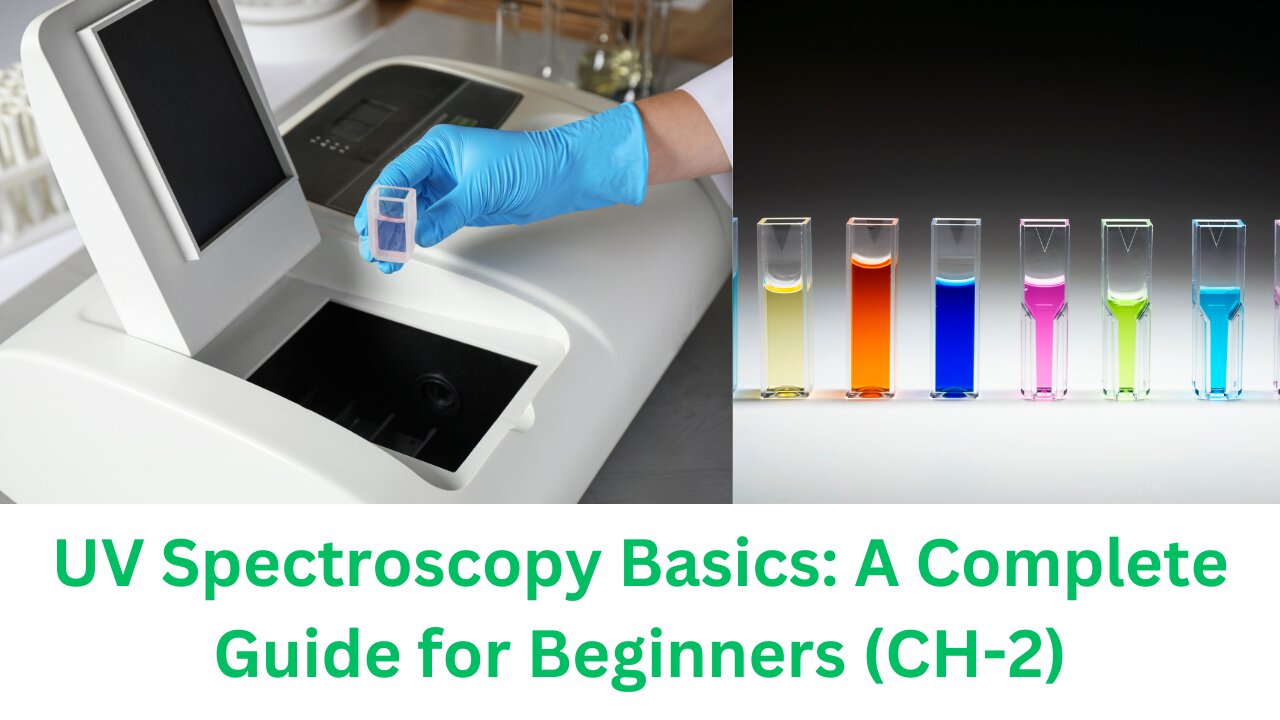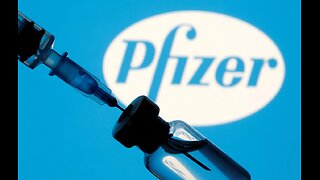Premium Only Content

UV Spectroscopy (Chapter 2)
UV Spectroscopy (Ultraviolet Spectroscopy) is an analytical technique used to measure the absorbance or transmittance of UV light by a substance. It operates within the UV region of the electromagnetic spectrum, specifically between 200 and 400 nanometers. UV spectroscopy is widely used in chemistry, biology, and environmental sciences due to its ability to provide valuable information about the molecular structure, concentration, and behavior of different substances.
Key Principles of UV Spectroscopy
Absorption of UV Light: Molecules absorb UV light at specific wavelengths, causing electrons to transition from a ground state to an excited state. The specific wavelengths and intensities of absorbed light depend on the electronic structure of the molecule, particularly the types of bonds and functional groups present.
Electronic Transitions: UV spectroscopy primarily involves electronic transitions, such as π to π*, n to π*, and σ to σ* transitions. These transitions occur in various types of chemical bonds, such as double bonds or lone pairs, and are useful in identifying unsaturated compounds or those with aromatic rings.
Beer-Lambert Law: UV spectroscopy often uses the Beer-Lambert Law to determine the concentration of an analyte in a solution. According to this law, the absorbance of a substance is directly proportional to its concentration and the path length of the UV light through the sample. This makes UV spectroscopy an effective tool for quantitative analysis.
Applications of UV Spectroscopy
Identifying Compounds: UV spectroscopy is valuable in identifying organic compounds with conjugated systems, such as aromatic rings, which have distinct absorption patterns.
Quantitative Analysis: It is used to determine the concentration of compounds in a solution, especially in pharmaceuticals, biochemistry, and environmental monitoring.
Quality Control and Purity Testing: UV spectroscopy helps assess the purity of chemical compounds and detect contaminants, making it essential in industries like pharmaceuticals and food production.
Studying Reaction Kinetics: Researchers use UV spectroscopy to monitor reaction rates and study kinetic behavior by observing changes in absorbance over time.
Advantages of UV Spectroscopy
Non-Destructive: UV spectroscopy is a non-destructive method, meaning the sample remains intact after analysis.
Quick and Simple: It provides rapid results and requires minimal sample preparation.
High Sensitivity: UV spectroscopy is highly sensitive and can detect even small concentrations of analytes.
In summary, UV spectroscopy is a versatile, fast, and effective tool for identifying and quantifying compounds, offering a deep insight into molecular structures and behaviors across diverse scientific fields.
-
 LIVE
LIVE
Dr Disrespect
3 hours ago🔴LIVE - DR DISRESPECT'S TRIPLE THREAT CHALLENGE - ARC RAIDERS • BF6 • FORTNITE
1,428 watching -
 LIVE
LIVE
Side Scrollers Podcast
3 hours agoKaceytron Publicly Humiliated by H3H3 + Sabrina Carpenter/White House FEUD + More | Side Scrollers
956 watching -
 LIVE
LIVE
Sean Unpaved
1 hour agoArch Manning & Texas ELIMINATED From College Football Playoff Contention | UNPAVED
132 watching -
 5:58
5:58
Buddy Brown
4 hours ago $0.80 earnedAngel CAUGHT ON CAMERA Saves Street Preacher from ATTACK! | Buddy Brown
4.28K8 -
 LIVE
LIVE
The Charlie Kirk Show
1 hour agoBlackpilled Zoomers + Charlie's Sabbath + Minnesota Meltdown | Bowyer, Turek, Glahn | 12.3.2025
2,927 watching -
 2:01:57
2:01:57
Steven Crowder
4 hours agoVintage MAGA: Trump's Epic Somalia Rant Isn't Racist - It's Irrefutable
314K207 -
 12:23
12:23
The Illusion of Consensus
3 hours agoThe Moment Dave Smith was Accused of Being A Holocaust Denier by Alex Berenson
9.05K2 -
 1:06:14
1:06:14
The Rubin Report
3 hours ago‘The View’ Crowd Gets Confused as Whoopi Contradicts Facts
31.3K33 -
 2:32:06
2:32:06
LadyDesireeMusic
3 hours ago $0.52 earnedLive Piano Music & Convo - Warm & Cozy
15.5K1 -
 1:17:36
1:17:36
vivafrei
3 hours agoRobert Barnes Before Court of Appeal in Brook Jackson's Qui Tam Fraud Lawsuit Against Pfizer
32.3K9